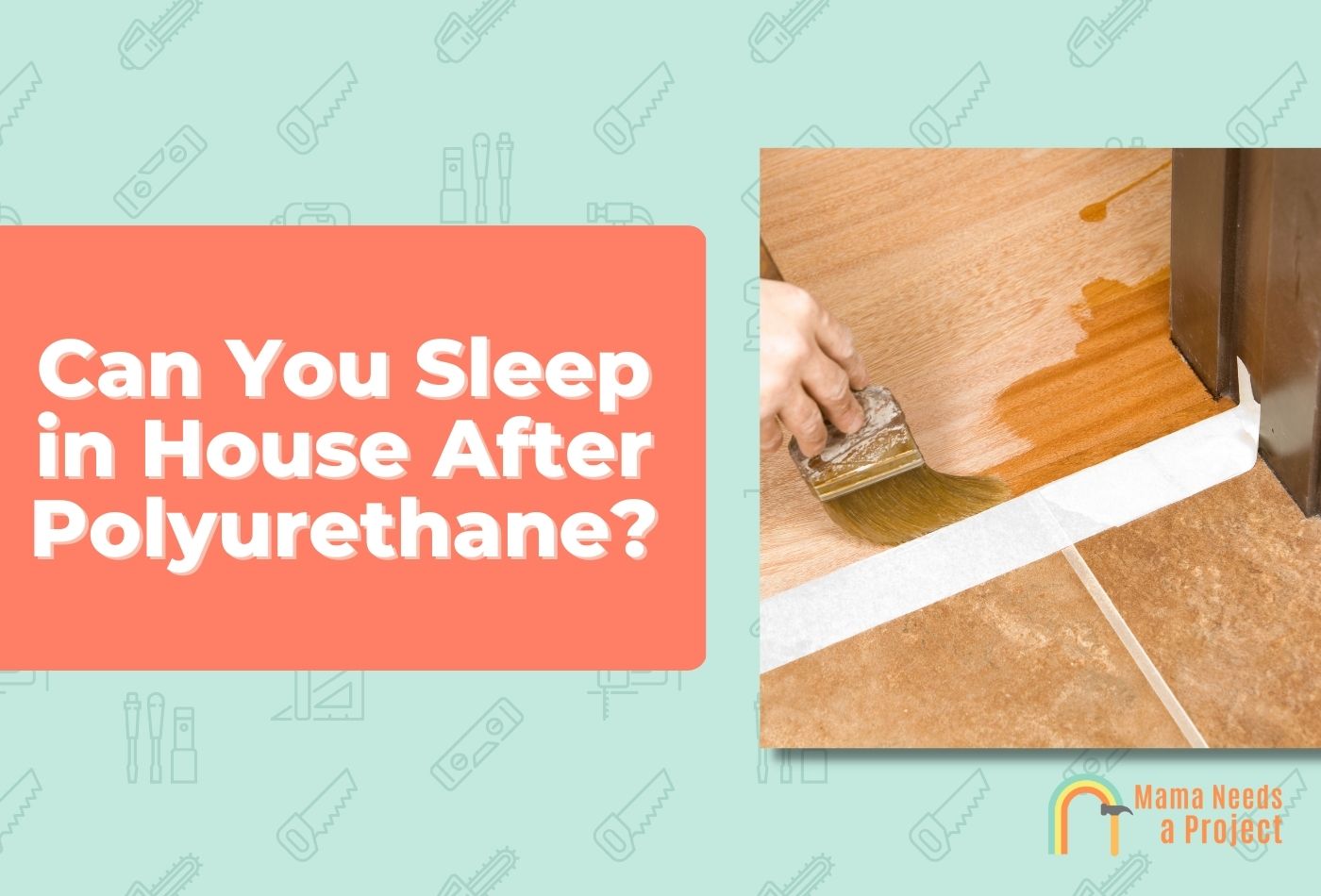Can You Sleep in House After Polyurethane?
If you’re in the process of refinishing floors in your home, you might be wondering, can you sleep in house after polyurethane?
In this post, I’ll breakdown everything you should know about using polyurethane in your home including how to get rid of the polyurethane smell, and more. Let’s dig in!
No, you can’t sleep in a house after you apply polyurethane. This goes for both oil- and water-based polyurethanes. You should wait at least 48 hours before coming back to your home in the case of water poly, and if oil poly was used give it 5-7 days. Sleeping in a house full of polyurethane fumes is likely to cause several adverse health effects.
Can you Sleep in House After Applying Oil-Based Polyurethane?
No, you shouldn’t sleep in a house after applying oil-based polyurethane to hardwood floors.
The reason why is because oil-based polyurethane emits fumes as it cures (dries), and overexposure to these fumes can lead to a variety of adverse health effects, including nausea, dizziness, headaches, and irritation of the eyes, nose, and throat.
After application, the fumes emitted by curing polyurethane will be strongest for 5-7 hours. After such time has passed, the fumes won’t be as harsh, but they’ll still be strong enough to make sleeping in the home overnight next to impossible.
For this reason, it’s best to give oil polyurethane at least 1-2 days to dry.
Applying Oil-Based Poly to Multiple Hardwood Floors
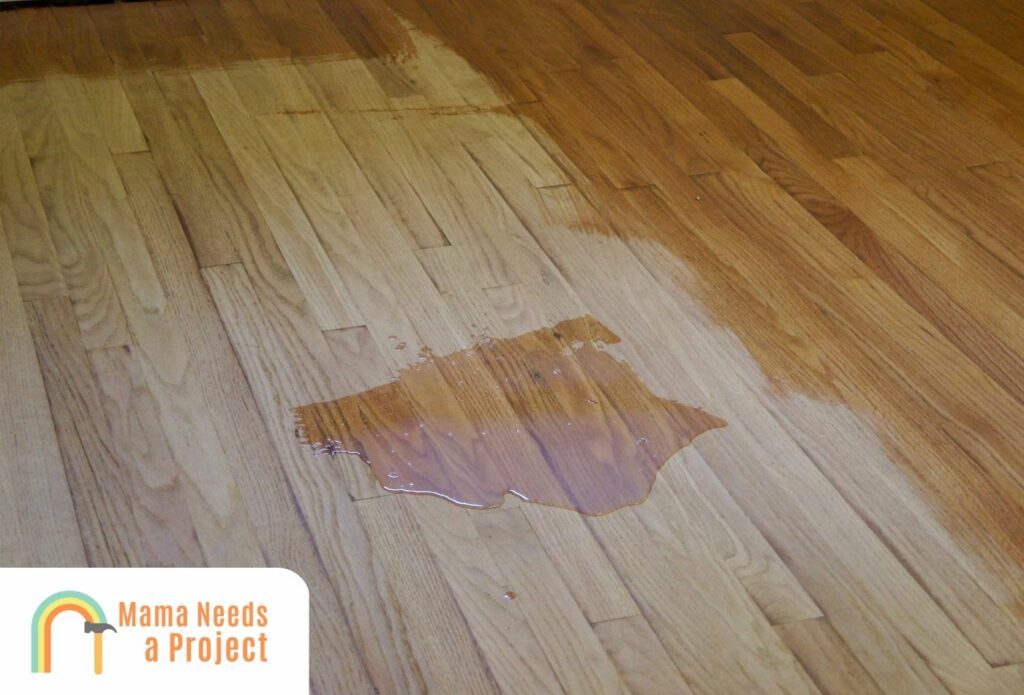
Some recommend staying away from home for at least five days, but this is really only necessary if all the wood floors in your house have just been coated with many layers of polyurethane.
After polyurethane varnish has cured for several days, you don’t have to worry as much about off-gassing, as most of the volatile organic compounds (VOCs) have been released already. VOCs are in part what make polyurethane toxic, and they’re also a big reason why polyurethane emits a distinct chemical odor.
Since oil-based polyurethane takes about 30 days to completely cure, the smell could linger in your home for longer than a month.
After the polyurethane has had several weeks to cure, you can use a variety of methods to dissipate the last remnants of the smell, but more on these later.
Applying Oil-Based Poly to One Floor or a Smaller Wood Surface
If you just applied polyurethane to one wood floor, and it’s possible to seal this room off while ventilating properly, you can sleep in your home without worry.
The same goes for when you apply a few polyurethane coatings to a small piece of furniture. In this instance, it’s best if you can keep the furniture in a garage or workshop that has good air circulation; it’ll be away from the main part of your home, so you won’t have to worry about the negative effects of polyurethane fumes.
After polyurethane has been applied, open windows, turn on an air purifier and one or two fans, and leave the room.
It’s only when you’re adding multiple coats to multiple wood floors at once that leaving the home is necessary.
Why Do You Have to Wait Longer for Oil-Polyurethane?
Oil-based poly takes longer to dry because it’s more viscous than it’s water-based counterpart, but this consistency is what makes it more durable once fully cured.
The curing (drying) process can be expedited with a heat gun or hairdryer, but this should only be attempted after the poly has had several days to cure; trying to expedite the curing process mere hours after application will not only be ineffective but also unnecessarily put you in harm’s way.
Can you Sleep in House After Applying Water Based Polyurethane?
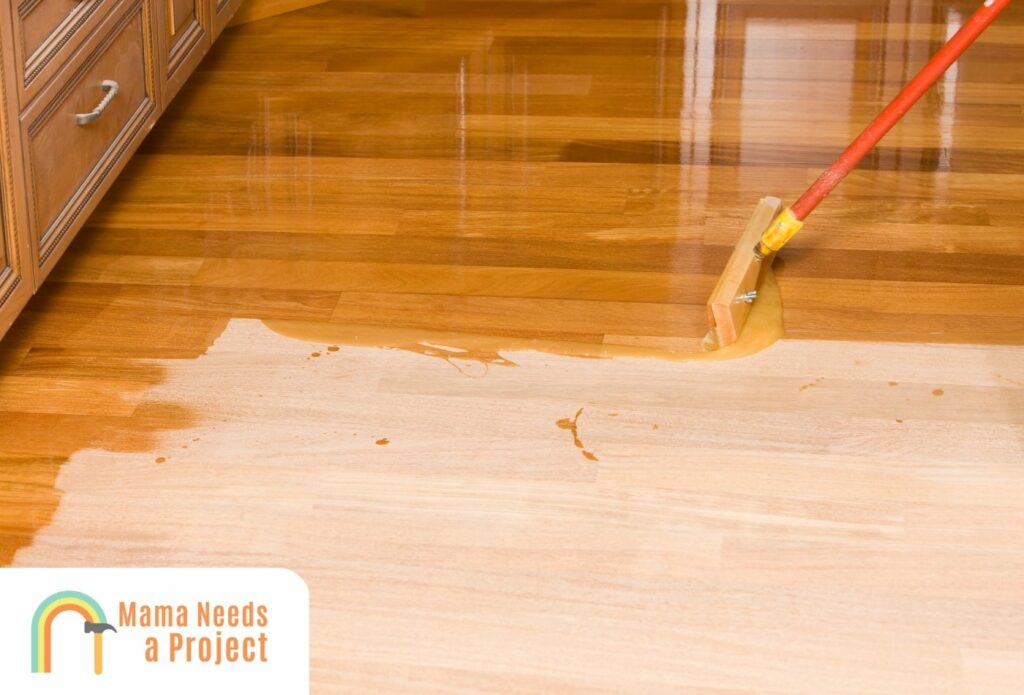
It’s not recommended that you sleep in the house after apply water based polyurethane.
You should wait at least 24 hours before you sleep in the home.
Usually it takes water-based polyurethane 1-2 hours to become semi-dry, and 14 days after application it should be completely cured.
Water-based polyurethane contains far less VOCs than oil-based, which means its fumes are neither as strong nor as toxic as those emitted by oil-based poly.
That said, if you are overexposed to the fumes emitted by water-based poly, you’ll get sick in the same ways that oil-based polly would make you sick.
But how long you have to stay away from home after water-based poly has been applied largely comes down to (1) how much was applied and (2) how good the ventilation in your home is.
Applying Water-Based Poly to Multiple Hardwood Floors
If you’ve applied water-based polyurethane to several wood floors in your home at once, it’s best to let at least 24 hours pass before you sleep in the house again.
Even though water-based polys don’t emit strong fumes like oil-based versions, if you’re exposed to these for a long period of time—i.e. more than a few hours—you’ll feel quite uncomfortable if not sick. Remember, these are harmful fumes at the end of the day.
And if your home lacks good ventilation, giving the poly at least 48 hours to cure isn’t a bad idea.
The speed at which water-based polyurethane dries is actually an advantage when you’re applying multiple coats at once, since the coats you apply first will just be about done emitting harmful fumes right as you complete the last coats.
Applying Water-Based Poly to One Floor or a Smaller Wood Surface
Whether or not you should sleep in your home shouldn’t even cross your mind if you’re just applying water-based polyurethane to a small piece of wood furniture, a tabletop, or one floor.
If possible, you should apply the poly in your garage or workshop, and after you do make sure the windows are open before turning on a fan or two.
Taking these extra precautions ensures you don’t have to worry about any toxic fumes making it into the interior of your home.
Of course, you could apply the polyurethane indoors, but for a variety of reasons it’s best to apply it in a designated work area, one that’s apart from the main home. This space should also provide access to the outdoors.
Why Do Water-Based Polyurethanes Dry Quicker?
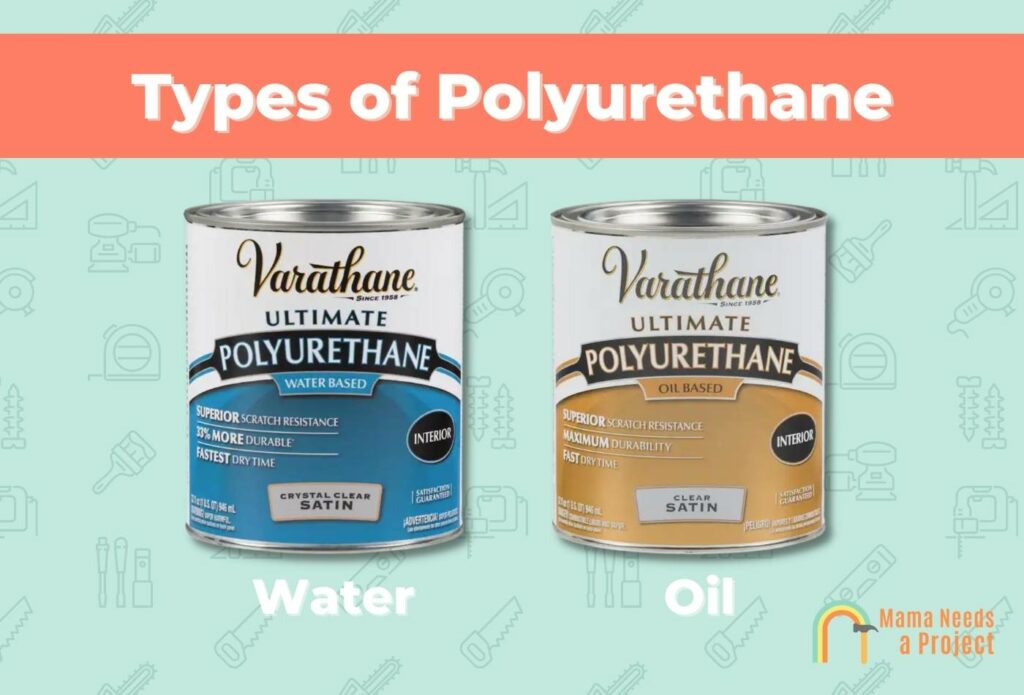
Water-based polyurethanes dry a lot quicker than their oil-based counterparts because they’re made with different materials and therefore less viscous.
In general, it takes any oily substance significantly longer to dry than a water-based substance, whether we’re talking about polyurethane, paint, stain, or another finish.
The quick-drying nature of water-based poly does have its price, however. Specifically, it’s not as durable. That said, it’s easy to repair this poly if it gets damaged, so it being weaker than oily polyurethane isn’t the end of the world.
Risks of Sleeping in House After Applying Polyurethane
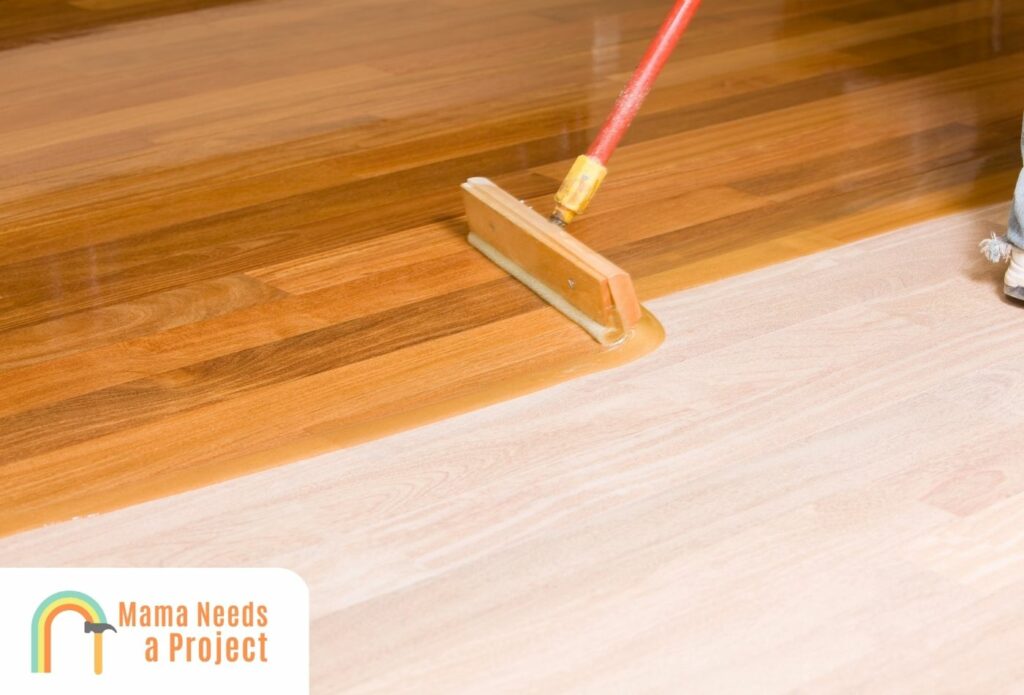
If you sleep in a house that’s recently had floors refinished, you run the risk of being overexposed to polyurethane fumes, which can lead to a variety of health problems, like nausea, vomiting, headaches, confusion, lightheadedness, and irritation of the eyes, nose, and throat.
The fumes can also irritate your respiratory system or be so overwhelming that they cause you to pass out.
Most homeowners book accommodations before they have their floors refinished, understanding the costs of being around polyurethane fumes for too long.
If you’re getting your polyurethane applied by a professional, it’s likely they’ll tell you well before any poly is put down whether you need to book accommodations or not.
How Long Do Polyurethane Fumes Last?
If you’re using oil-based polyurethane, you can expect to smell fumes in different degrees for at least 30 days. The fumes will be strongest right after you apply the finish and then they’ll dissipate gradually.
Once the polyurethane is 100% dry, there won’t be any strong odors coming from it.
So if your polyurethane floor is still emitting fumes, it hasn’t dried completely.
There may be a lingering smell even after the poly is done off-gassing, but it’s easy enough to remove—just open some windows, turn on a box fan, etc.
Tips to Remove Polyurethane Fumes
Opening Windows
Opening windows is the best way to dissipate the polyurethane smell.
It’s likely they’ll be at least one window in the room where you applied polyurethane, and if you’ve applied this to many floors at the same time, you can pretty much open up all the windows in your home to create adequate cross-ventilation.
Since window-opening is a necessary part of the polyurethane curing process, it’s best to apply polyurethane when it’s not that cold outside, as this way you’re not letting in frigid air that can slow the curing process and cause the polyurethane to dry improperly.
At the same time, you need to ensure there are screens in the windows to prevent any particles, like dirt and bits of leaves, from blowing in and sticking to the polyurethane surface.
Opening windows alone is great, but adding another smell-removal method, like fans or odor-removers, will expedite the smell-removal process and allow you to get back to your home quicker.
Using Fans
Using fans will also expedite the curing process.
For example, you should set up a box fan in your window so it blows in fresh air.
Keep your fans off the drying polyurethane surface, otherwise you’ll have to touch up the areas where they were later.
I like to put an oscillating tower fan in the doorway of the room where I just applied polyurethane to the floor; this way air blows from corner to corner and out the window opposite.
If you have an exhaust fan, this will be especially useful, as it can suck up the fumes and release them outside.
A ceiling fan will also be a big help, particularly in large rooms.
Using Natural Odor-Removers
There are many natural odor-removers, including white vinegar, lemons, oranges, onion peels, and limes, and these can be spread around the house after polyurethane is applied to reduce the strength of the odor.
The only thing I don’t like about this method is you have to put these in receptacles, and then the receptacles will have to be placed on the floor.
Placing multiple receptacles on the floor may expedite the curing process, but considering you’ll have to touch up the finish later, I don’t think the few minutes saved are worth it.
But if your home lacks good ventilation and you don’t have the fans necessary to speed up drying, these natural solutions will do the trick.
Air Purifier
An air purifier that’s equipped with a HEPA filter will help reduce the strength of polyurethane fumes. If you don’t own one, you can rent one from a local big-box hardware store.
Using an air purifier in conjunction with open windows and fans is a fantastic way to speed up the poly curing process.
FAQs
Can you sleep in house after staining floors?
No, you shouldn’t sleep in your house right after your hardwood floors have been stained. The same reason why you don’t sleep in your home after a polyurethane application is the same reason why you don’t sleep in it after staining, i.e. the fumes will probably overwhelm you and make you sick in numerous respects.
Final Thoughts
So if you’re going to be refinishing hardwood floors in your home with an oil-based poly soon, you should plan on being out of the house for at least 48 hours. To be on the safe side, stay away for 5-7 days.
If you’re using water-based poly, 24-48 hours away will be enough time.
In the end, don’t be in a rush to get back to the curing polyurethane, as overexposure to the polyurethane smell can adversely affect your health in a variety of ways.

